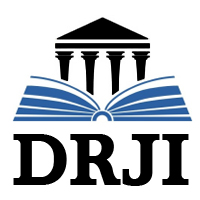Methodology for saving fuel consumption in ships through dynamic programming variables
Abstract
Ship's weather routing is defined as optimal following of the ship's route with optimal speed and engine power for a sea voyage based on en-route weather forecasts and ship characteristics. In this degree work, the dynamic programming method was used to optimize the route, which is based on the Bellman optimality principle, and compares it with the IMO MEPC method, with the direct objective of minimizing the fuel consumption of the vehicle. voyage in a vessel, while ship movements and arrival time are managed through constraints: therefore, a single objective optimization methodology was used to minimize a cost function (total fuel consumption). As a result, it was obtained that the dynamic programming method allows saving between 4.5 and 6% of fuel in foreseeable weather conditions with speed configurations
Downloads
References
OMI. Estrategia de Reducción de Emisiones de GEI de los Buques: http://www.imo.org/en/MediaCentre/HotTopics/GHG/Pages/default.aspx; 2018.
OMI. Indice de Resoluciones y Directrices MEPC relacionadas con el Anexo VI de MARPOL. https://www.imo.org/en/OurWork/Environment/Pages/Index-of-MEPC-Resolutions-and-Guidelines-related-to-MARPOL-Annex-VI.aspx; 2020.
Powell W. Approximate Dynamic Programming: Solving the curses of dimensionality: John Wiley & Sons,; 2011.
OMI. El proyecto de enmiendas al Convenio MARPOL requeriría que los barcos combinen un enfoque técnico y operativo para reducir su intensidad de carbono: https://www.imo.org/en/MediaCentre/PressBriefings/pages/42-MEPC-short-term-measure.aspx; 2020.
Dnv G. Evaluación de tecnologías y combustibles alternativos seleccionados.: DNV GL—Marítimo; 2018.
Bayo F. Wiki Nautico Lamarencalma. [Online].; 2018. Available from: http://wiki.lamarencalma.com/index.php?title=METEOROLOG%C3%8DA#:~:text=El%20estado%20del%20tiempo%20es,informaci%C3%B3n%20de%20la%20previsi%C3%B3n%20del.
Calderón I. RICE propulsión. [Online].; 2015. Available from: http://www.ricepropulsion.com/TNLS/AhorroComustible.htm.
Copyright (c) 2024 Ciencias de la Ingeniería y Aplicadas

This work is licensed under a Creative Commons Attribution-NonCommercial-NoDerivatives 4.0 International License.
The authors who publish in this journal agree to the following terms:
- Creative Commons Attribution-NonCommercial-NoDerivatives License allows others to share the work with acknowledgment of authorship of the work and initial publication in this journal.
- Authors may separately establish additional agreements for the non-exclusive distribution of the version of the work published in the journal (for example, placing it in an institutional repository or publishing it in a book), with an acknowledgment of its initial publication in this journal.
- Authors are permitted and encouraged to disseminate their work electronically (for example, in institutional repositories or on their own website) before and during the submission process, as it can lead to productive exchanges, as well as further citation. earliest and largest of published works (See The Effect of Open Access) (in English).









